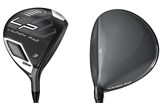How to choose the right fairway wood for your golf game
Published: Last updated:
Choosing the right fairway wood for your game is a tricky decision that most of us don’t take seriously enough.
Lots of us have old fairways that have been in the bag for years. Many of us simply buy the same model fairway as our driver. But the fact Callaway, Ping and TaylorMade all have three options in their ranges tells you that not every wood is equal – and it really pays to find the right one for your swing, which is why we produce our guide to the best fairway woods.
While fast, aggressive swing speeds that often have no difficulty launching shots into the air might want to control spin to add distance, slower, more moderate-speed players could benefit from extra spin to help keep shots in the air for longer.
So what’s good for one player can be detrimental to another. That’s why modern fairway families often come in groups of three – low spin, standard and lightweight/draw-biased models.
Having tested all of the leading fairway woods this year, the time felt right to help you identify your best fairway wood set-up in 2020. To help you choose the right model, here are the questions you need to ask yourself…
Should I get the fairway wood that matches my driver?
Not necessarily. It’s easy to assume that if you’ve been fitted for a low-spin driver, naturally you need a low-spin fairway. But that’s simply not the case. We tee it up with a driver, yet often hit fairways from the deck. So how your swing presents the club to the ball at impact can differ massively between the two, meaning your prescription for a driver can be very different to a fairway wood.

Related: Best Drivers 2020
Does my game suit a standard or low-spin fairway wood?
This is a key question – and lots of golfers get it wrong. They go for a fitting and the pro asks them to hit shots with their own club first, then hands over a low-spin model which is naturally faster off the face. Just a few shots into the session, the launch monitor is showing as clear as day you’ve gained ball speed and carry distance from the new model, so you’re sold.
Unfortunately, what the launch monitor doesn’t tell you (like some unscrupulous fitters) is how a low-spin model is also less forgiving on mishits. So beware if your fairway fitting numbers (and fitter) guide you straight into a low-spin model. And check your dispersion, too.

Will I mainly hit the club from the tee or fairway?
If you mainly hit your fairway from the tee, there are strong 3-woods precisely for that purpose. They usually have 13-14.5 degree lofts.
TaylorMade make a SIM Max Rocket 3, Callaway have the Mavrik 3+, Ping the LST, and Cobra and Mizuno have the Big Tour and TS (Tour Spoon) models respectively. Each of them makes a great driver alternative.
For maximum versatility, make sure you can launch any low-lofted model from the fairway as well as the tee. Or do like a number of tour players do and team a strong and weaker-lofted fairway at the top end of your bag.

Do I struggle to launch fairway woods from the deck?
If you’ve ever wondered why fairway woods are harder to launch from the turf than they used to be, modern balls are partly to blame. In the search for distance, ball manufacturers have lowered spin. And when it comes to launching fairways from the turf at average swing speeds, that takes its toll.
To combat the issue, several brands now make 16.5 degree 3- or 4-woods, which can be really good for getting enough height to maximise carry.

Am I battling a fade or slice?
Dialling in shot shape through fitting has become really important in recent years, and adjustable fairway woods aid that process.
Setting up a wood with an upright lie angle can close the face a fraction, so the more upright you go, the more draw bias you get. Adjustability means you don’t need to opt for a full-on draw model to hit the high draw you’re looking for.
Clever designers regularly take it upon themselves to build in some draw bias via heel weighting, movable weights or an offset hosel. Combine those features with the extra one degree of loft regularly found in lighter models and that’s several crucial traits helping to get shots launching higher and flying straighter, which also maximises carry.

Related: The key swing move ALL good golfers make
Is there a best fairway wood for slower swing speeds?
The average age of golfers is creeping up, and it’s no secret that we typically lose 1mph of club speed every two years we get past 60. Which is why brands target moderate swing speeds with specific models.
There is the TaylorMade SIM Max D, the Callaway Mavrik Max, while Wilson (Launch Pad), Honma (XP-1) and Cobra (F-Max Airspeed) each do it with specific moderate swing speed ranges.
The general idea is that lighter clubs let you swing at the same speed, but the club travels faster thanks to some clever counter-balanced weighting tech getting the head moving faster.
On a spec sheet it might look like any differences between lightweight/draw models and low spin alternatives are minimal, but dive a little deeper and there’s much more to them than meets the eye.

For example, Ping’s G410 SFT (Straight Flight Technology) fairway may be just two swing weight points lighter than the brand’s low-spin LST model, which doesn’t sound a lot. But the spec sheet doesn’t factor in an 18% larger head size in favour of the SFT (and a very different, flatter shape), and up to 16% less weight in the shaft, plus an extra 1.5 degrees of loft.
Add all that together and it doesn’t take Einstein to realise the SFT will be easier to live with, which is exactly why, if you struggle for speed, lightweight and/or draw biased models can work wonders for your long game.
Related: Best Drivers for Beginners and High Handicappers
What shaft do you need?
Until recently, you could only really choose from a variety of shafts when you bought a new driver. But with brands now creating three different ranges of fairway wood, each can feature shafts that suit the target golfer of each range.
Low spin fairways typically come with heavier, lower-launching shafts. Lighter, draw models, aimed at more modest speeds, often come with lighter, higher-launching shafts. There’s 16g difference between TaylorMade’s SIM and SIM Max D shafts, and that’s not factoring in how one launches shots on a low- to mid-trajectory, while the other targets much higher ball flights.

Is there much difference between models in the same family?
Our test data with Callaway’s three Mavrik fairway woods perfectly illustrates how different clubs are designed to perform. The Mavrik Max (lighter shaft) launched shots on average 2.2 degrees higher and peaked shots out five yards higher than the lower spinning Callaway Mavrik Sub Zero.
At our pro’s swing speed (with the extra spin created), that robbed him of eight yards of carry. But at lower swing speeds, the extra spin would have a significant impact on keeping shots flying for longer and boosting carry.
How many fairway woods do I need?
There is no perfect number; the choice should come down to how comfortable you feel playing them. As with hybrids (where you identify which is the longest iron you hit with confidence, then fill the gap between it and your shortest fairway wood), identify the distance gap between your longest hybrid and driver, and fill it.
If you don’t like hybrids, there’s no harm in filling the gap with fairway woods. Callaway make a Mavrik 11-wood with a 25-degree loft, the same as some 6-irons!
READ NEXT
– Best Hybrids
BECOME A TODAY’S GOLFER MEMBER: Unlimited access to premium content and exclusive rewards!
-
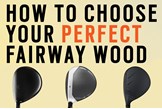 Choosing the right fairway wood for your game isn't as simple as you might think.
Choosing the right fairway wood for your game isn't as simple as you might think.
-
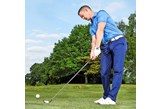 You may want to hit your fairway wood from the deck as well as the tee.
You may want to hit your fairway wood from the deck as well as the tee.
-
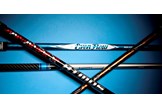 Getting the right shaft in your fairway wood is vital.
Getting the right shaft in your fairway wood is vital.
-
 Some fairway woods can help you reduce a slice.
Some fairway woods can help you reduce a slice.
-
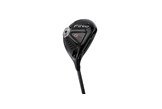 The Ping G410 LST is a low-spin fairway wood.
The Ping G410 LST is a low-spin fairway wood.
-
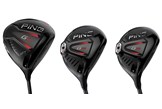
-
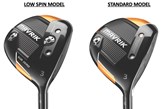
-
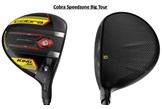
-
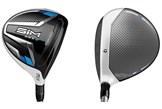
-
